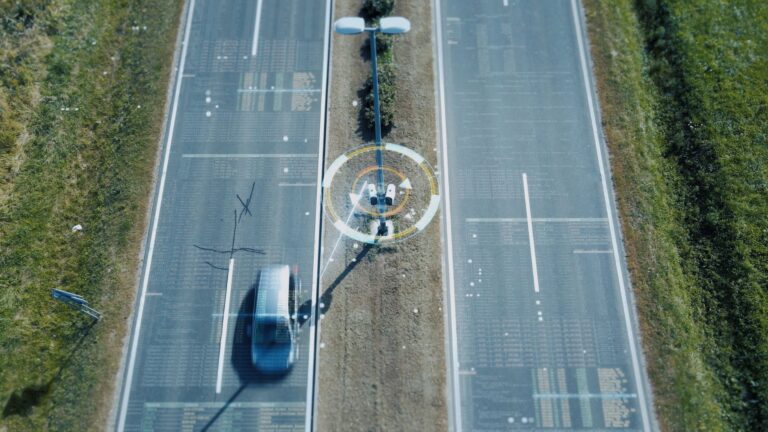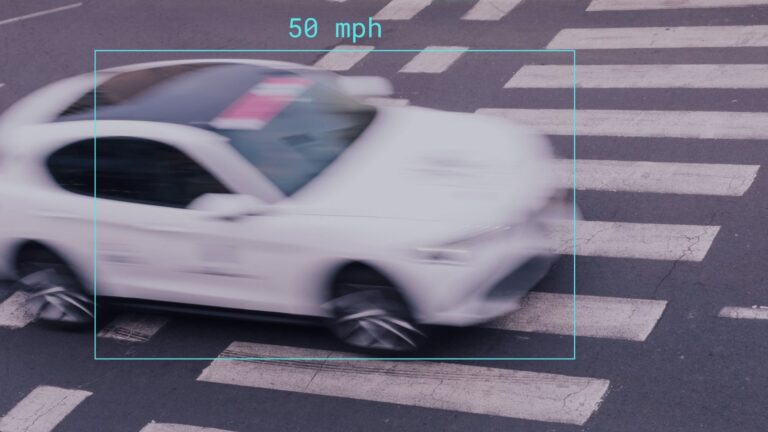In times of ever-advancing technology in traffic enforcement, artificial intelligence (AI) as a sub-domain of machine learning is a new trend no one can ignore any longer. It is beginning to shape the industry and provides new opportunities, both for preventative analytics and enforcement. From smart cameras that detect mobile phone use to mandatory in-cabin monitoring systems, AI is transforming how authorities can identify and deter distracted driving. This blog explores what’s already legal in Europe, where enforcement is most advanced, and what North American drivers can expect in the near future.
Automated Enforcement Today: Europe is Leading the Way

1. Mandatory Driver Monitoring Systems in New Vehicles
Regulation (EU) 2019/2144 mandates that all new passenger and goods vehicles (categories M and N) sold in the European Union must be equipped with driver drowsiness and attention warning (DDAW) systems. These systems have been required for new vehicle types since July 2022, and for all new vehicles since July 2024. Further, the fitment of Advanced Driver Distraction Warning (ADDW) systems became mandatory for all new vehicle types in July 2024, and will extend to all new vehicles by July 2026. These in‑cabin solutions use cameras and AI to track driver eye movement, head position, and steering inputs, issuing real-time alerts before danger arises.
2. Automated Fines for Mobile Phone Use
The Netherlands pioneered fully automated fines for handheld mobile phone offences. Since late 2021, fixed and mobile cameras equipped with AI have identified drivers using phones behind the wheel and automatically issued fines, reaching thousands of infringements within months of implementation.
3. UK Trials of AI-Powered Mobile & Seatbelt Cameras
In the United Kingdom, National Highways began piloting mobile AI enforcement cameras on the M4 in 2021. These trailer‑mounted cameras detect seatbelt and phone offences, flag potential violations, and forward images for human validation. After a successful initial run, the trial expanded to ten police forces — Durham, Greater Manchester, Humberside, Staffordshire, and more — and ran through to March 2025. In just six months, nearly 7,000 seatbelt and over 25,000 phone offences were recorded, demonstrating AI’s deterrent power.
4. In-Car Distraction Cameras to Debut
France will require new cars sold from mid‑2025 to include cabin‑mounted cameras that detect distracted behaviour, such as looking away from the road for more than 3.5 seconds at higher speeds or 6 seconds at lower speeds, and trigger warnings to the driver. Similar mandates are under discussion in Germany and other EU nations under the broader EU General Safety Regulation framework.
What’s Coming in North America?

1. Canada’s Research-Only Pilots
In September 2022, the University of Alberta launched a three‑week pilot in Edmonton, testing AI cameras to detect distracted drivers by capturing high‑resolution images through windshields. Although no fines were issued, the study gathered crucial data on incident rates and camera accuracy, laying groundwork for potential enforcement programs.
2. Minnesota’s Enforcement Rollout
On Highway 7 in Shorewood, Minnesota, AI‑enabled unmarked vehicle cameras logged over 10,000 distracted driving incidents in February 2025 alone. The volume of violations was so high, police were only able to stop 3% of those drivers. In response to these findings, the Minnesota Office of Traffic Safety is funding 14 law enforcement agencies to deploy similar mobile camera units, marking one of the first real‑world North American applications with enforcement intent.
3. Early Development & Emerging Solutions
While large‑scale rolling out of AI distracted-driving enforcement remains limited, hardware providers like VITRONIC are already supplying high-resolution imaging and machine‑learning systems to their partners in the U.S. and Canada. Although still in early development phases across North America, these technologies promise to expand enforcement capabilities within the next few years.
What Drivers Need to Know
- Handheld phones are no longer invisible.
- Modern AI cameras capture clear images through windshields, even in low light, and flag hand-to-ear phone use. Unlike traditional spot checks, these systems can monitor entire highways continuously.
- AI-assisted enforcement includes human oversight: almost all programs require human review of flagged images before fines are issued. However, initial data capture is entirely machine-driven, increasing the volume of detected offences.
- Mandatory in-cabin alerts are coming: EU‑mandated DDAW and ADDW systems will be standard on new vehicles, alerting you to distraction or drowsiness before a critical moment. North American automakers and regulators are studying similar frameworks for future rollout.
- Keep an eye on local legislation & trials: Provinces and states may launch their own pilot or permanent AI enforcement programs. Watch out for announcements from your transportation department and local police.
- Balancing safety and privacy with confidence: As advanced technologies like in-cabin cameras and roadside AI become more common, protecting individual privacy remains a top priority. Most enforcement programs are designed with strict safeguards, such as limiting data storage, ensuring minimal human review, and complying with local privacy regulations. Public agencies and solution providers work together to uphold transparency and accountability. To stay informed, review your local policies on data retention and use.






